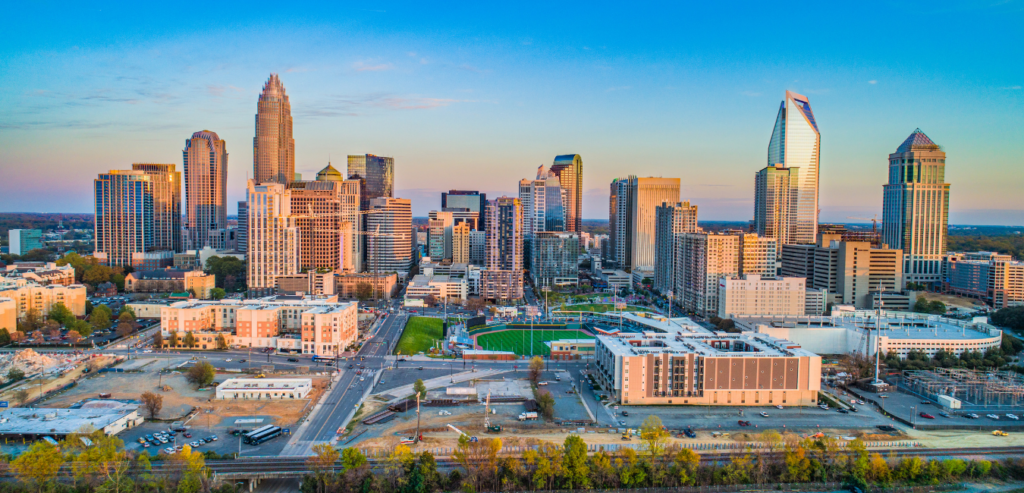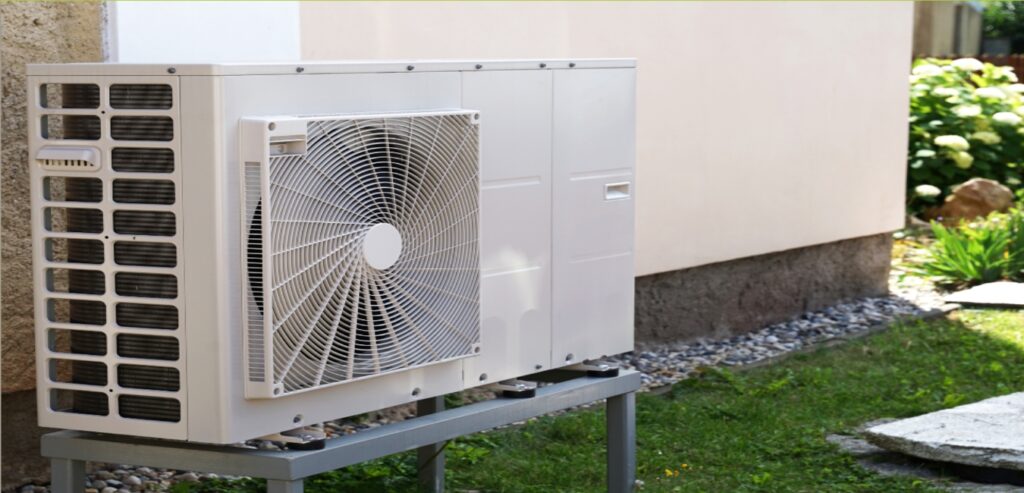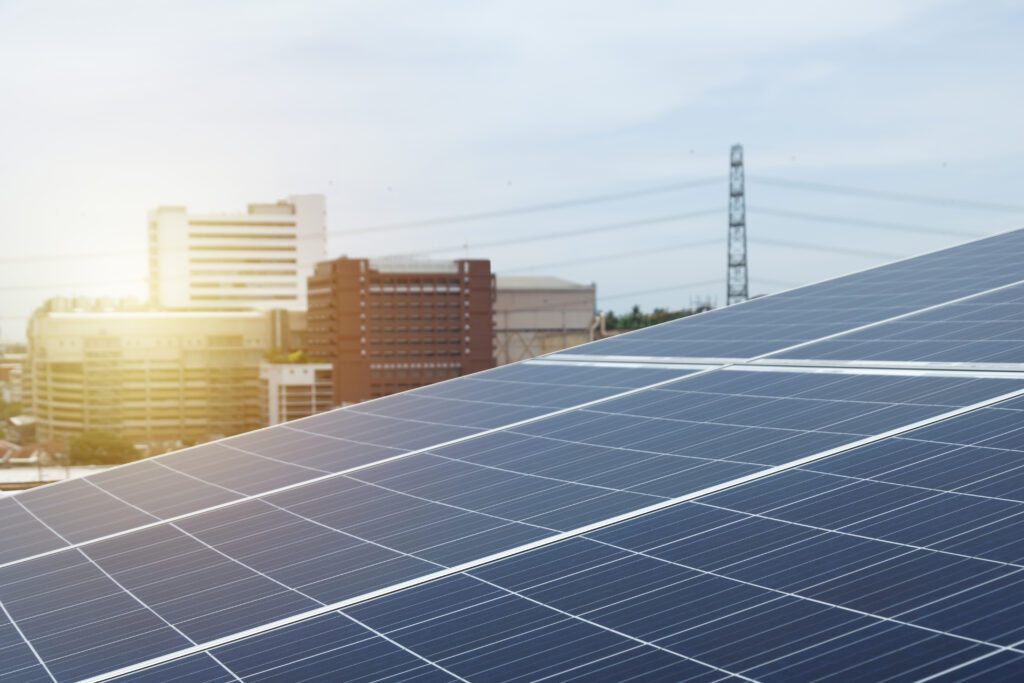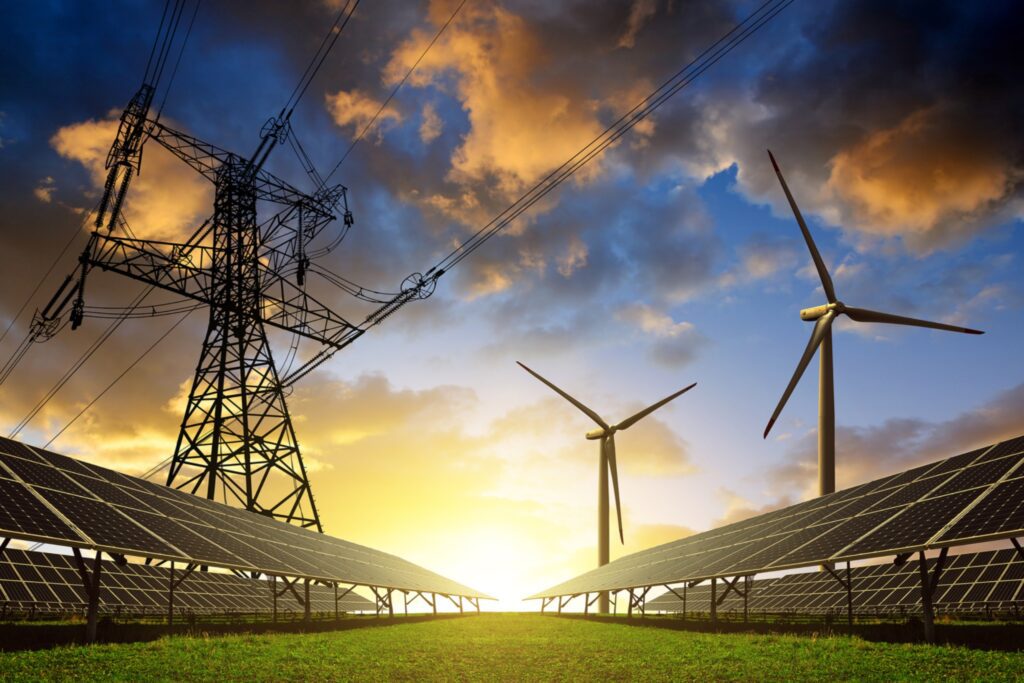Deep Energy Retrofits
Existing buildings represent the most significant opportunity for energy efficiency. As we upgrade our current building stock, deep energy retrofits can save energy and money.
Check out the SMARTScale implementation guide and toolkit
Learn MoreCode & Policy
2015 IECC AND IEBC (Base Codes)
Codes & Policy / December 21, 2015
NBI and several other leading organizations proposed code revisions for a range of I-Codes including the International Energy Conservation Code (IECC) and the International Existing Building Code (IEBC). Proposals focused on the usability and effectiveness of the energy provisions in...
Tools & Guides
SMARTScale
Online Tool / February 21, 2017 / Existing Buildings
Introducing SMARTScale... In 2014, the US Department of Energy (DOE) awarded a grant to NBI partner Ecology Action to create and demonstrate a nationally scalable model targeted to utility and public benefits efficiency program operators for delivering deep retrofits in…
Research
A Search for Deep Energy Savings
Report / August 23, 2011
A report from NEEA's BetterBricks program and New Buildings Institute investigates* 11 energy retrofits in existing commercial buildings that, on average, resulted in energy use 50% less than the national average – many with an energy use intensity (EUI) below…
Focused Strategies
There are no codes & policy for Deep Energy Retrofits. Please see our other codes & policy below.
2024 IECC Code Change Proposal Synopsis
Codes & Policy / February 14, 2022
Below you will find summaries of the draft code amendments and links to revision details that were submitted by NBI into the ICC process to advance the 2024 IECC. They are identified as Commercial or Residential and categorized by efficiency,...
Embodied Carbon
Codes & Policy / February 13, 2022
Building operations and construction-related activities are responsible for approximately 39% of humanity‘s global greenhouse gas (GHG) emissions. More than a fourth of those are embodied carbon emissions, those associated with the production of building materials, construction activities, operations, and end...
Building Performance Standards
Codes & Policy / January 21, 2022
Building performance standards (BPS) set targets for existing building energy performance and are one of the best tools we have for achieving deep energy savings and emissions reductions in existing buildings. They can be written to optimize the energy use...
Model and Base Energy Codes
Codes & Policy / July 16, 2021 / Energy Codes
For more than 20 years, NBI has been working with partners and within the code-making bodies to advance codes at the national, state, and local government levels. National model energy codes and standards like ASHRAE 90.1 and the International Energy Conservation Code (IECC) have...
Zero Cities Project
Codes & Policy / February 13, 2019 / Energy Codes
The Zero Cities Project is a three-year project supporting both cities and their most impacted communities* to co-develop and implement actionable and equitable roadmaps and policy strategies to achieve a zero-net-carbon (ZNC) building sector by 2050. Through a community collaboration...
Zero Energy/Carbon Codes
Codes & Policy / October 28, 2018 / Zero Net Energy (ZNE)
Building energy codes are playing an increasing in facilitating the move to ZE buildings. As advances in construction practices and building components and systems are proven out, communities are strengthening the building codes so that higher levels of building efficiency...
Stretch Codes (Advanced Codes)
Codes & Policy / October 15, 2018 / Energy Codes
New design and process strategies can be demonstrated through a variety of advanced code strategies. NBI builds market capacity for higher efficiency energy codes by encouraging the use of stretch codes (also referred to as reach codes). To support the...
Washington State Energy Code Roadmap to 2031
Codes & Policy / October 15, 2018 / Energy Codes
Many organizations and jurisdictions have adopted a range of building performance goals over the past decade that have significantly changed the conversation about energy codes and building energy performance. The primary policy driver for the Washington State Energy Code increases in...
Steps to Achieving Outcome-Based Energy Codes
Codes & Policy / December 22, 2015
Outcome-based energy codes, codes require that a number of policy, data and administration pieces be put in place.
zEPI
Codes & Policy / December 22, 2015
The 2015 International Green Construction Code (IgCC) includes many progressive measures that will improve the energy performance of buildings. One important provision describes the Zero Energy Performance Index (zEPI), which provides a scale for measuring commercial building energy performance. zEPI...
Zero Net Energy Policies
Codes & Policy / December 22, 2015
Policies and programs can dramatically change the landscape for Zero Net Energy (ZNE) buildings. There is burgeoning market interest in ZNE, and policies and programs can foster and grow that interest through leadership, direct support, and the reduction of risks and...
Aligning Utility Programs with Local Codes (Policy)
Codes & Policy / December 22, 2015
Bringing energy codes to market often involves a comprehensive approach that starts years before a code is adopted by a local jurisdiction. NBI provides technical assistance through each stage of code development. NBI aggregates technical information from existing high performance buildings. Observed trends...
Outcome-Based Energy Codes (Advanced Codes)
Codes & Policy / December 21, 2015
Our nation’s current energy codes include structural and enforcement characteristics that limit the ability to achieve significantly more energy savings without major changes. Current energy code strategies consider only a limited number of the factors that impact building energy performance. ...
Model Energy & Green Codes
Codes & Policy / December 19, 2015
NBI works collaboratively with a wide range of industry partners to bring model energy codes up to current market capabilities. Measures promoted by NBI include higher efficiency standards for equipment and advanced design strategies such as daylighting. Once adopted by states...
COMNET (Polcy)
Codes & Policy / December 19, 2015 / Policy
NBI manages the development of COMNET, a quality assurance initiative to standardize building energy modeling, by creating consistent baselines relative to various energy codes and standards. COMNET extends and supports existing systems for assessing and rating the energy efficiency of...
ResearchView All
Outcome-Based Energy Codes for Existing Buildings, Seattle Model Energy Code Project
Report / May 16, 2011
The Preservation Green Lab (PGL), the City of Seattle, and New Buildings Institute (NBI) are collaborating on a new energy code framework for existing and historic buildings that will pair accountability for actual performance outcomes with flexibility in how building…
Assessment of Market-Ready Evaporative Technologies for HVAC Applications
Report / January 28, 2010
NBI completed a report on the range of evaporative, evaporative hybrid and evaporative condensing technologies for HVAC applications on behalf of Southern California Edison including: technologies, manufacturers, market applications and adoption factors surrounding evaporative approaches to cooling.
Events
There are no events for Deep Energy Retrofits. Please see our other events below.

2024 Getting to Zero Forum
Event / May 21, 2024 - May 23, 2024
The Getting to Zero Forum is the premier event dedicated to building decarbonization. With a growing number of climate emergencies across the United States and around the world, there is no more important time than now for the Getting to…

Combi Heat Pump Webinar
Webinar / May 22, 2024 @ 10:00 am - 11:00 am PDT
This webinar will delve into combination space and water heating systems, also known as combi systems. While these systems seem promising, they present a level of complexity that raises questions about their practicality. The current market boasts standalone heat pump…

Both Sides of the Meter: GridOptimal Building Strategies (Part 1)
Event / June 6, 2024 @ 10:00 am - 11:00 am PDT
Buildings are at the center of our energy systems and account for over 70% of US electricity consumption. To succeed in decarbonizing our grid, buildings and the systems within buildings can be part of the solution. These two classes will…

Both Sides of the Meter: GridOptimal Building Strategies (Part 2)
Event / June 13, 2024 @ 10:00 am - 11:00 am PDT
Buildings are at the center of our energy systems and account for over 70% of US electricity consumption. To succeed in decarbonizing our grid, buildings and the systems within buildings can be part of the solution. These two classes will…
NewsView All
Four strategies for decarbonization, electrification in commercial buildings
News / May 23, 2023
Published by Consukting-Specifying Engineer: To develop actional processes and to reinforce the importance of energy efficiency, New Building Institute (NBI) published the “Existing Building Decarbonization Code.” According to NBI, the code is “… a new way for jurisdictions to reduce...
The Retrofit Savings Estimator
News / October 6, 2015
Building owners considering an energy-efficiency upgrade now have a new tool to help them weigh their options and choose strategies that will optimize energy savings or target the biggest opportunities among a portfolio of buildings. NBI has released a beta...
These Small Business Segments Make Super Customers
News / July 17, 2015
In 2013, Preservation Green Lab (PGL) and the New Buildings Institute (NBI) reported on seven small building segments with high energy savings potential: food service, main street buildings, freestanding offices, strip malls, schools, freestanding retail and lodging. This inspired Diana...
Blog
New York Invests in Energy-Saving Strategies to Meet Climate Action Goals
Post / January 4, 2019
New York has emerged as a shining star in local energy policy with New York Governor Andrew Cuomo’s announcement early last year of an ambitious energy efficiency target to reduce energy consumption by 185 trillion BTUs (British thermal units) by...
Cities Get Help to Prioritize Energy Upgrades, Improve Codes and Policies that Drive Better Building Performance
Post / April 21, 2017 / Benchmarking & Feedback, Existing Buildings
Buildings are responsible for almost half of all U.S. energy consumption (46%), and poor-performing buildings have an outsized impact on energy use. But without a systematic approach to track building performance, it’s often difficult to know where to start. By setting...
Congressional Members Look at Reinventing Existing Buildings
Post / September 29, 2015
I had the honor recently of addressing members of Congress on opportunities for “reinventing” existing buildings to achieve high levels of energy efficiency and productivity. The morning briefing was hosted by the Alliance to Save Energy. Why existing buildings? (more…)
What Commercial Real Estate Executives Think and Do About Energy Efficiency
Post / September 16, 2015
The 2014 Northwest Commercial Building Stock Assessment estimates the size of the Commercial Real Estate (CRE) market in the Northwest to be 1.6 billion square feet–a market of existing buildings that are prime candidates for energy and carbon reductions through...
New buildings database offers important lessons on achieving low-energy buildings
Post / December 9, 2014
There is no better teacher than experience and now NBI has over 280 experiences to share through its new Getting to Zero Buildings Database. The database officially released today offers a dynamic way to find in-depth case studies about high...
Northwest cities get help from NEEA to address worst performing buildings
Post / November 20, 2014
Existing buildings with aging equipment and infrastructure represent a tremendous opportunity for energy savings. But, without a mechanism to identify inefficient buildings and prioritize budgets for upgrades, it’s difficult to know where to start. Under a pilot program, funded by...
Government Leadership Creates Powerful Action on Deep Energy Efficiency and Climate Change
Post / April 9, 2014
Vermont, California, Kentucky, Pima County, Salt Lake City, Fort Collins, Washington DC. These communities are among those leading by example in setting zero net energy (ZNE) goals for both local policies and their own government buildings. Policymakers in these jurisdictions...
Case StudiesView All
Lovejoy Building Case Study
Case Study / April 27, 2012
In Portland, OR a retrofit of the existing load-bearing brick structure required a major seismic upgrade in this building. The architects used this as an opportunity for an integrated response to advanced structural upgrades, enhanced user thermal comfort and improved…
Johnson Braund Design Group Case Study
Case Study / April 27, 2012
Johnson Braund Design Group (JBDG) in Seattle was able to dramatically improve their building’s energy performance, reduce operating costs and provide a test ground for energy-efficient design strategies to influence its clients. The JBDG Building now uses 69% less energy…
Christman Building Case Study
Case Study / April 27, 2012
The Christman in Lansing, MI is one of the few Triple LEED Platinum buildings designated by the USGBC LEED Program. The building is located in a climate zone comparable to Montana, northeast Washington and eastern Idaho, and its age and…
Aventine Case Study
Case Study / April 27, 2012
The Aventine in LaJolla, CA is a certified LEED Existing Building Platinum and has an Energy Star rating of 100, the highest possible, and uses just 23 kBtus/sf, 75% less than the national average for offices. Retrofits addressed high-energy loads…
1525 Wilson Boulevard
Case Study / April 27, 2012
This all-electric building in Rossyln, VA used a combination of energy efficiency strategies, including replacing HVAC and lighting systems and providing tenant education. Energy use was reduced by 35% in just one year, resulting in savings over $250,000 on energy…
Mercy Corps Headquarters
Case Study / April 27, 2012
This building in Portland, OR is 50% historic renovation and 50% new construction. The information in this profile addresses both the renovated and the new parts of the building. Pursuing energy efficiency supports their mission of sustainability, and lower operating…
Home On The Range
Case Study / April 27, 2012
This Project Profile builds on a case study prepared by USGBC, including data on energy performance for one year, and provides updated owner feedback and energy use data. The actual energy use of the building in Billings, MT, is 46…
Beardmore Building
Case Study / April 27, 2012
The Beardmore in Priest River, Idaho has the distinction of being one of the few buildings in the country that is both LEED Gold certified and on the National Register of Historic Places. The project demonstrates a very successful renovation…
200 Market Building
Case Study / April 27, 2012
The 200 Market building in Portland, OR, has made continuous energy retrofits and system improvements. These efforts have moved the building from an ENERGY STAR score of 79 in 2006 to a score of 98 (out of 100) in 2010,…
Joseph Vance Building
Case Study / April 27, 2012
Since its acquisition, significant investments have been made to renovate this building in Seattle to improve energy efficiency and environmental performance, as well as tenant experience. Occupancy increased from 68% to 96% and has seen increased rents, tenant retention and…
Alliance Center
Case Study / April 27, 2012
The Alliance for Sustainable Colorado launched a project titled “Modeling a Net Zero Future: Energy Efficiency in Existing Buildings” to explore options that will enable it to approach a zero-net energy goal. Several documents developed for the project are referenced…
A Case For Deep Savings: 11 Case studies of Deep Energy Retrofits
Case Study / August 23, 2011
For NEEA’s BetterBricks program, New Buildings Institute investigated* 11 examples of energy retrofits in existing commercial buildings that, on average, use 50% less energy than the national average – most with an energy use intensity (EUI) of less than 40…
Tools & Guides
SMARTScale
Online Tool / February 21, 2017 / Existing Buildings
Introducing SMARTScale... In 2014, the US Department of Energy (DOE) awarded a grant to NBI partner Ecology Action to create and demonstrate a nationally scalable model targeted to utility and public benefits efficiency program operators for delivering deep retrofits in…
